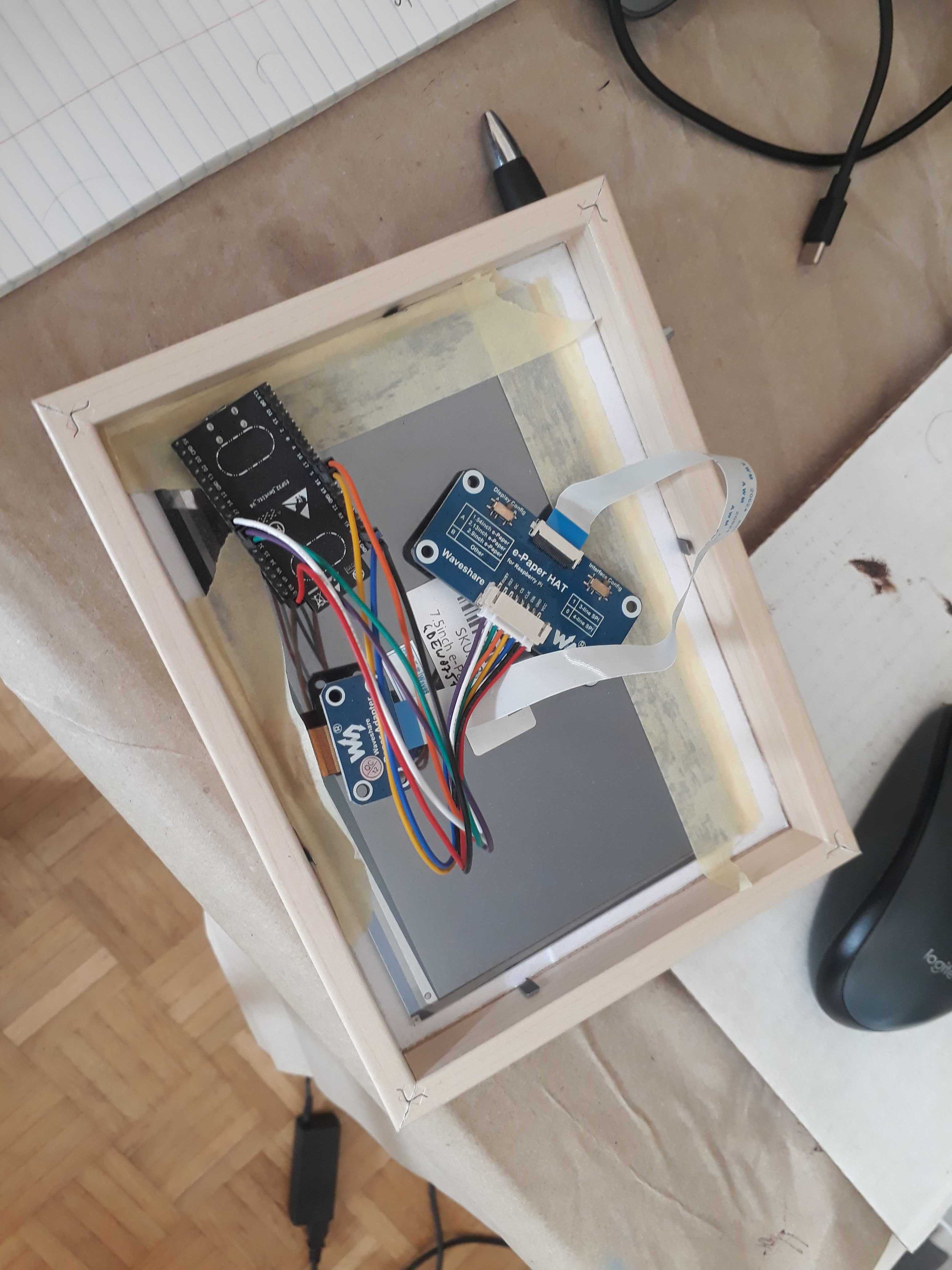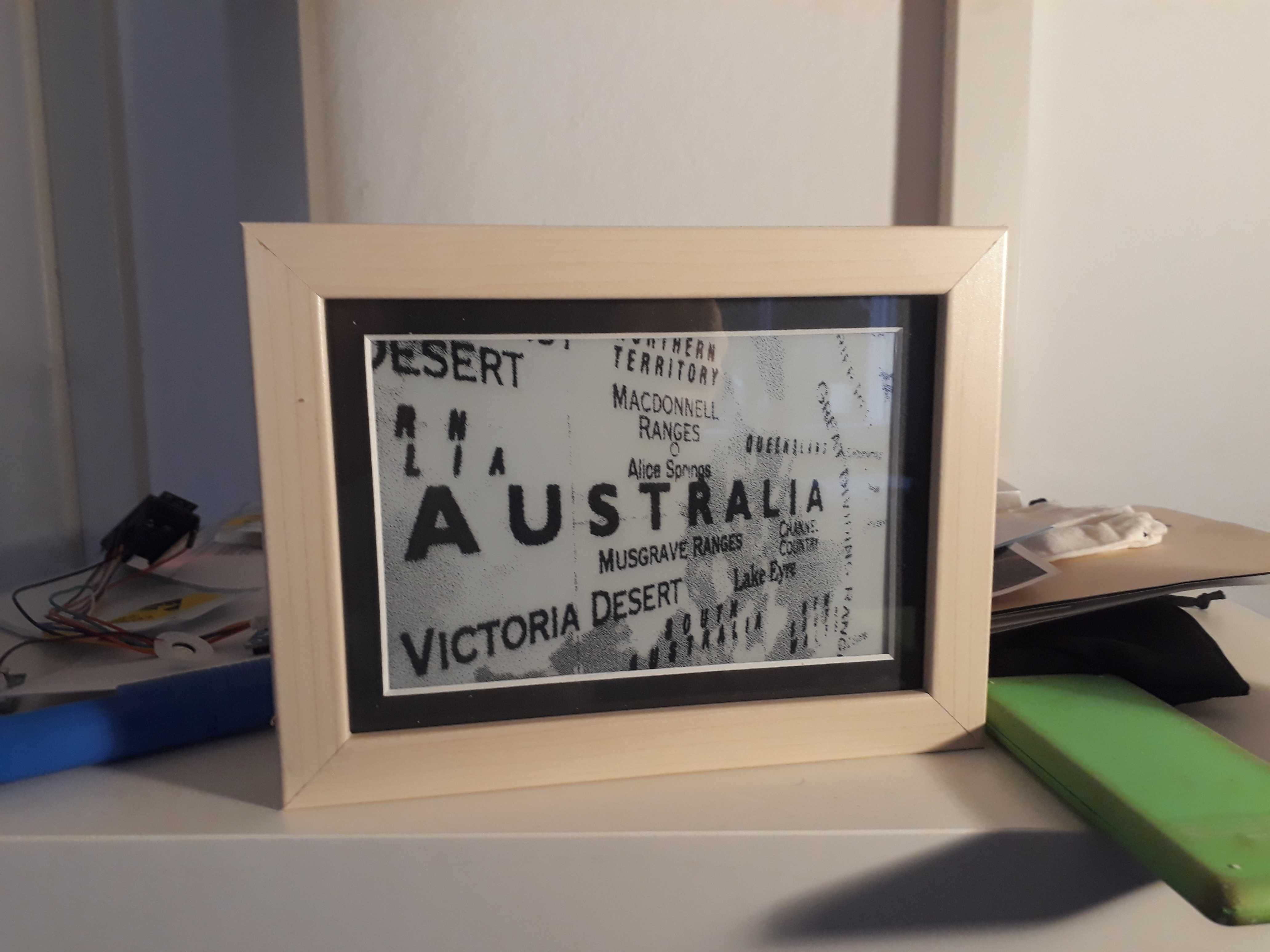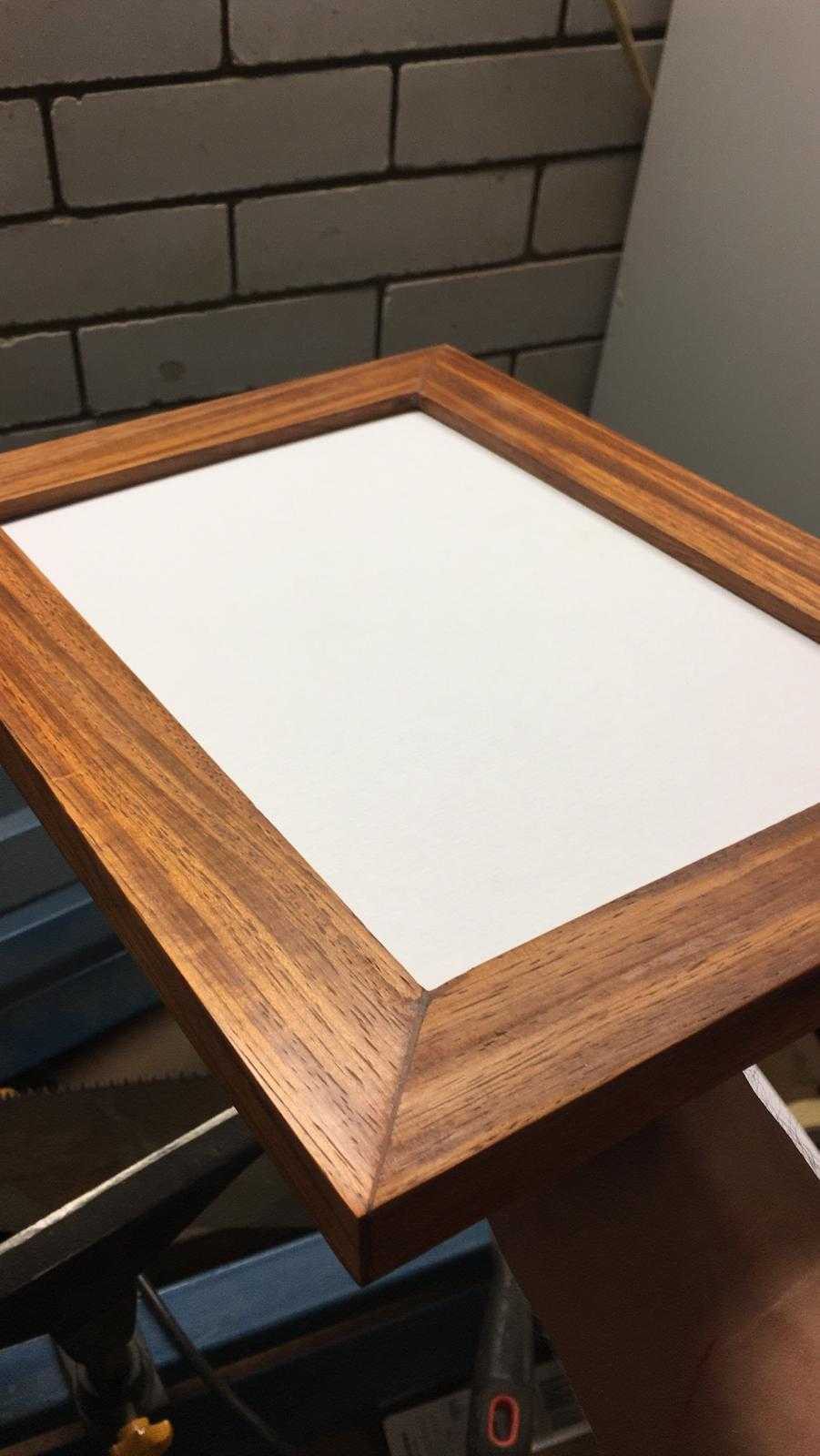-
2nd version, ESP-32 devboard
05/21/2022 at 14:45 • 0 commentsIt was pretty clear after testing with the RPi that it was going to be a lot of work to get it into a state that worked robustly and was user friendly for non-technical people. So the next version I decided to move to an ESP-32, which used a lot less power, handled shutdowns much better, and could have much simpler code. I also decided to get my own website to serve the images, moving away from the email solution. I still like the email option, but I haven't worked out a good way to implement it yet.
This just used the esp32 dev board and didn't have a battery, but it was all I needed to work out the code on both the esp32 and the server. Originally I had the images just sitting in a public folder, which anyone could access if they worked out the (easily guessable) URL, but now they are served through a php script which requires a key specific to the "frame" making the request. The server has a database with the details and settings of the different frames (i have multiple running at once), which means some can have different resolutions, colour depths, update times and so on.
![]()
The frame itself was just a picture frame I bought from a supermarket, so looked passable from the front but of course a mess on the inside.
![]()
-
1st version, Raspberry Pi Zero
05/21/2022 at 14:35 • 0 commentsSo the first version of this concept used a Raspberry Pi Zero and received the images by email. I liked how easy it was for anyone to send images by email, without needing to remember a link (although it needed a specific password in the subject line to be displayed). But the email was a googlemail account, which was a mess for me to set up without getting it blocked for accessing it automatically and so on. And I never fully trusted google not to change the service in a way that would break the system.
Also, the Pi was definitely overkill. It allowed a lot of nice onboard image processing options, but that really wasn't necessary, and the whole startup and graceful shutdown issues made the power supply a lot more complex. I used a nice 16bit greyscale e-paper display though, which looked really good and it had an 1872×1404 resolution, so it was actually quite hard to see that it wasn't a printed image. The contrast is better with the lower resolution displays I'm using now. Also, the high resolution display needed a bit more complicated driver, and was about double the price. I might go back to it in a future version.
My brother made a nice wooden frame for it, with a water jet cut and bent aluminium backing (still looking for the photos though). It looked quite nice but the inside was held together with blu-tac and tape, and was a mess of wires.
![]()
 Cameron
Cameron

